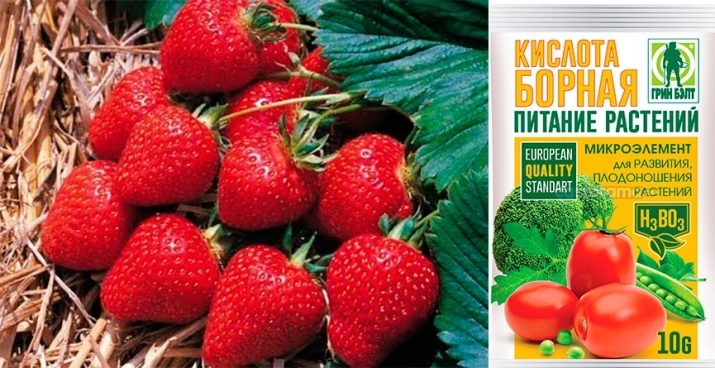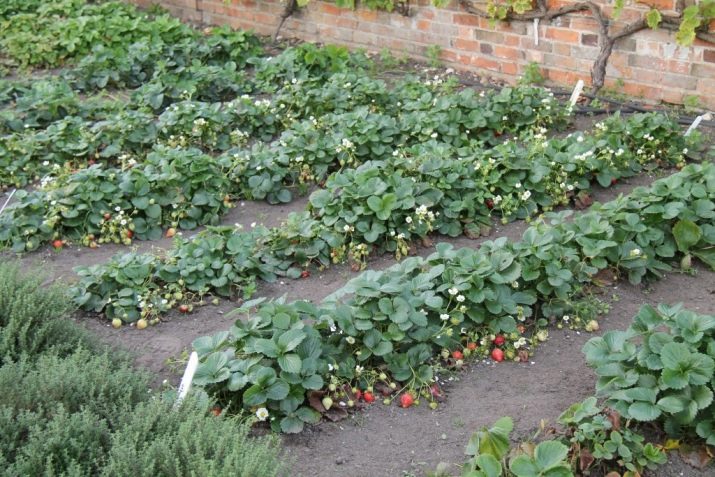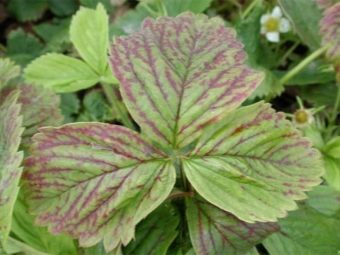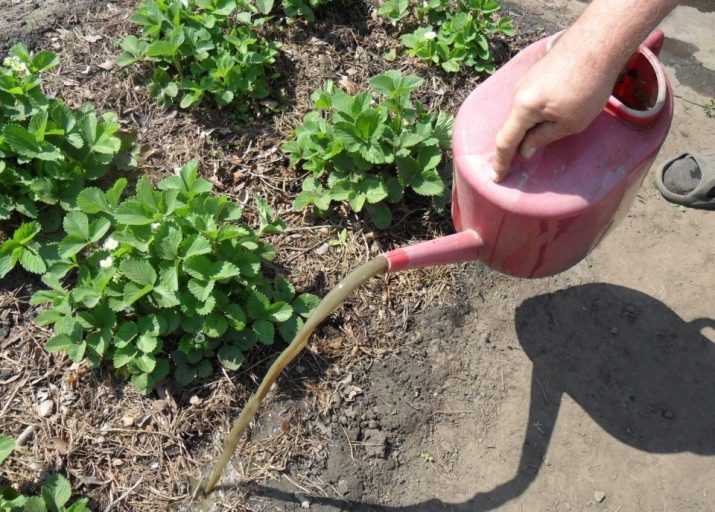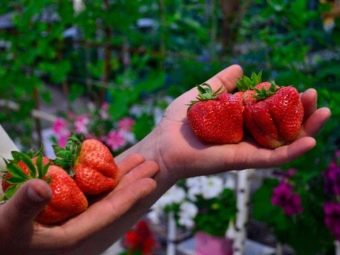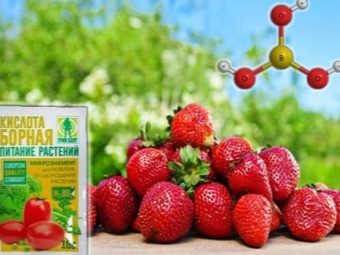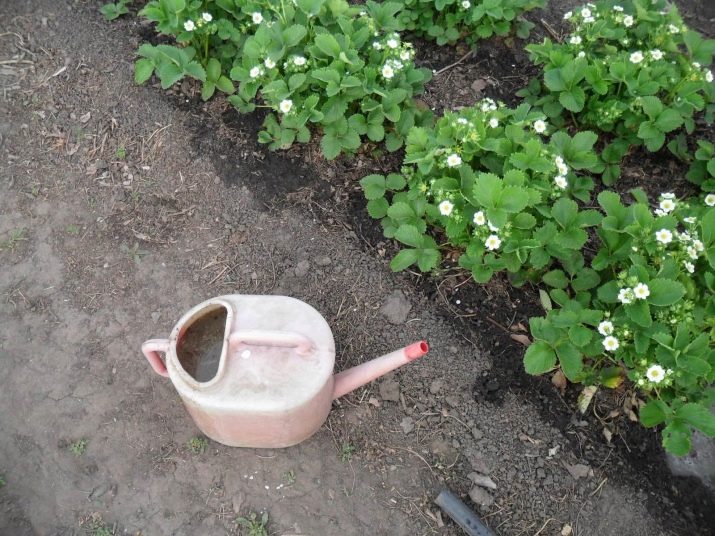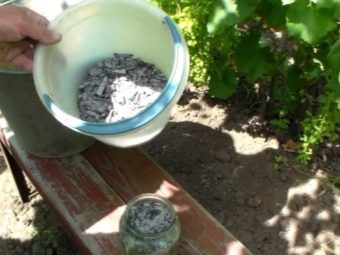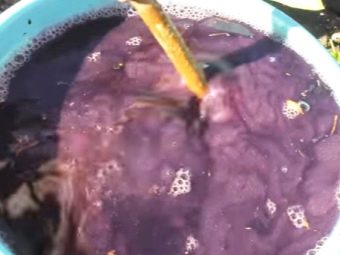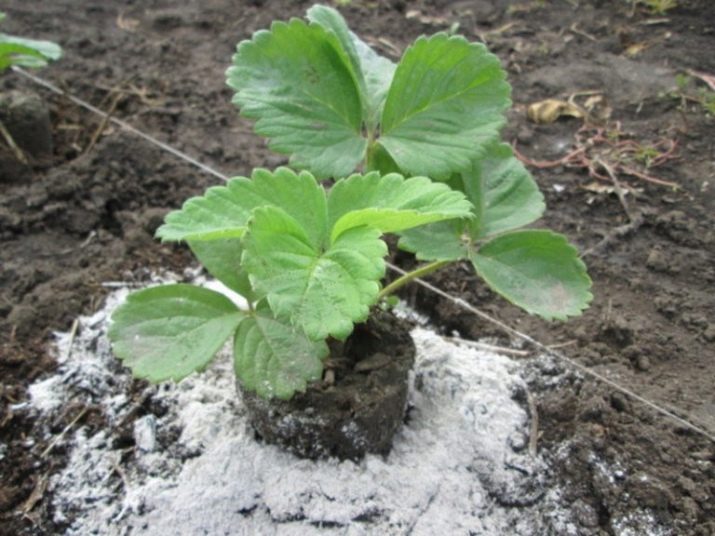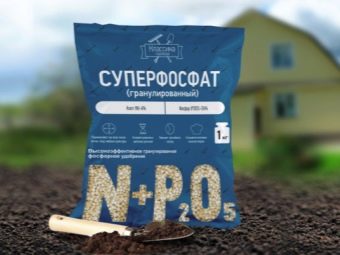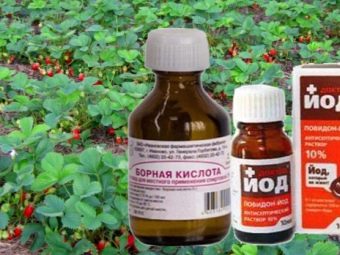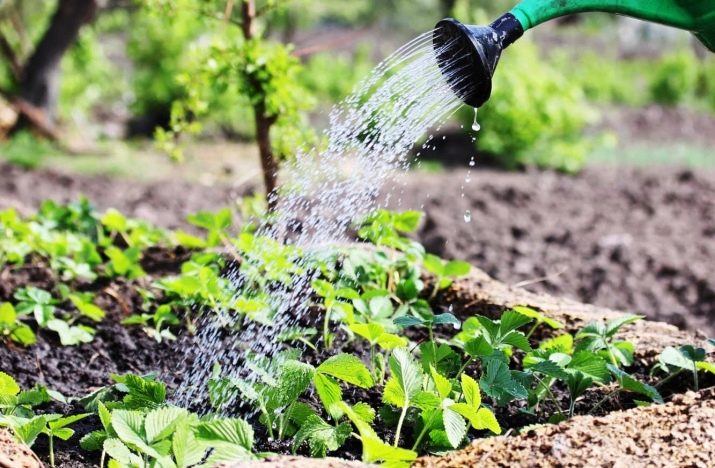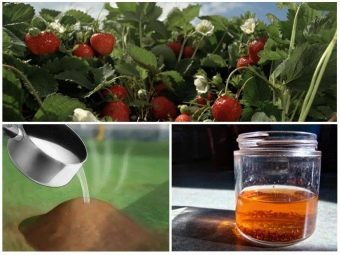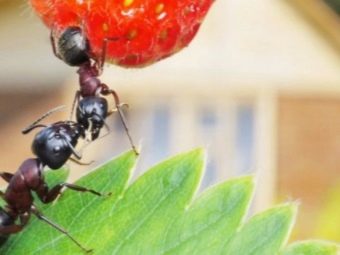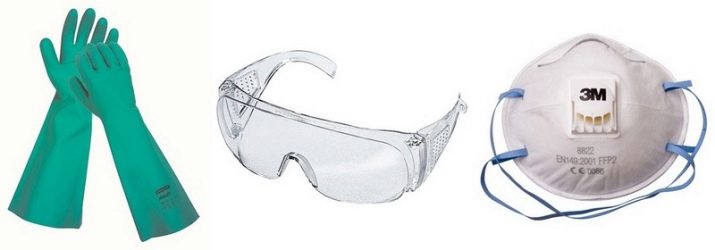Boric acid for strawberry

Strawberries are one of those crops that are sensitive to the lack of necessary boron in the soil. One of the ways to increase the content of this valuable element is to feed boric acid, which, in addition, has properties that help fight against diseases and pests. Therefore it is worth considering in what cases and how exactly boric acid is used for strawberries.
Signs of shortage and excess boron
The role of boron in the metabolism of strawberry bushes is that without a sufficient amount of it, many nitrogenous compounds necessary for the normal development of the plant cease to be synthesized correctly. When a crop gets enough boron, its foliage also increases the amount of chlorophyll, which, in turn, increases the growth rate of the bush and increases its yield.
The lack of this element in the soil gradually manifests itself in the form of deformation and subsequent death of strawberry leaves. If time does not take action, starvation can even lead to the death of the tissues of the shoots. And when the plant does not receive enough of this element during flowering, the ovary of the berries is formed from flowers extremely reluctantly, which significantly reduces the expected yield. Well, in cases where a boron deficiency catches up with the plant during fruiting, it can be noticed by the following features:
- berries are smaller than usual;
- even the resultant fruits ripen unevenly;
- the size of a fully ripe berry is significantly less than the average for the variety;
- there is a lack of sugar and a high water content in the ripe fruit.
Thus, the violation of the boron balance of the soil primarily affects the quality and quantity of the crop. Therefore, it is important at the first signs of a shortage of boron to produce fertilizing, replenishing its reserves in the soil. One of the simplest and most effective means for such treatment is boric acid, which can be bought without a prescription at almost any pharmacy.
We should also consider cases when the soil, on the contrary, contains an increased amount of boron. This situation has the following effect on strawberries:
- the development of the lash and root of the shrub is much slower than it should be for the variety;
- characteristic lesions appear at the lower edges of the leaves, in essence, which are chemical burns;
- along with damages, leaves “twist”, as a result of which they take a spiral or dome-shaped form;
- in the advanced stage, the dying off of part of the leaf tissue occurs, which begins with yellowing of the edges.
Most often this situation happens when fertilizer dosage is incorrect. In such cases, fertilizing with formulations containing boron is immediately stopped, and the soil is regularly washed with clean water.
Flushing should be done until complete disappearance of the occurrence of new symptoms on strawberry leaves. In the most neglected cases, you will have to either transplant the bushes into the unspoiled ground, or sacrifice them.
Benefit and harm
The use of boric acid in cases of an established shortage of boron in the soil can eliminate the negative effects of this situation. Ovary after such dressing is formed much more actively, the flowers cease to crumble even with noticeable gusts of wind, the deformation and necrosis of the leaves slow down, the leaves become more saturated green color (indicating an increase in chlorophyll content).
If you feed the strawberry bushes with boric acid during their fruiting at the first manifestations of boric starvation, the size of the fruit increases, the content of excess moisture in them noticeably decreases, and the taste becomes much sweeter and more pleasant. The total yield of strawberry cultivated by this simple tool can increase up to 20%. Restoring the balance of boron in the soil allows plants to tolerate much more unfavorable weather - heat, drought, frost and a sharp change in temperature.
Boric acid affects not only the content of boron in the earth. It can also be used to combat various pests, among which it is particularly effective for eliminating ants. In this case, the destruction of ants, in turn, reduces the number of aphids. These insects are in a symbiotic relationship - ants protect the aphids from natural enemies, because it releases on the surface of its shell edible substances for ants.
And if you water the strawberry bushes with a weak aqueous solution of boric acid, you can get rid of the pests living in the soil - various worms and insect larvae.
Finally, it possesses boric acid and a noticeable disinfectant and fungicidal action. This allows us to recommend it to combat strawberry diseases of both bacterial and fungal nature. This remedy is especially effective against various rot (especially dry and brown), which often affects bushes growing in conditions of high humidity.
Another great advantage of boric acid over more complex boron-containing compounds is a weak effect on the human body. A few drops of this substance on the skin are unlikely to cause any unpleasant consequences. However, security measures when handling it is still better to follow.
With all these advantages, this substance has disadvantages. The most important of them is the likelihood of an excess of boron in the soil after using this tool in the wrong dosage. This is important to consider in cases where the indication for the use of this tool is an invasion of pests or plant diseases, and not a shortage of boron.
Another potential danger of boric acid is that with significant dosage exceedances, it is not fully absorbed by the plant and begins to accumulate in its fruits. Eating such strawberries can harm human health.
Dosage and rules of administration
In order to avoid the occurrence of an excess of boron or the accumulation of boric acid in fruits, it is important to correctly select the proportions of the solutions used. It should be borne in mind that feeding and processing of pests is carried out in different ways. At the same time, boric acid itself is available in two types - powder and alcohol solution. In the following recipes, the dosage will be given for the powder form.
The required amount of alcohol solution can be recalculated using the concentration indicated on the package. For example, 100 grams of a 1% boric acid solution contains 1 gram of active ingredient. Dilution of boric acid should be carried out exceptionally warm, not cold water. Of course, the water should not be tap water, but purified.
For fertilizer
Fertilizing strawberries with boric acid solutions can be done by two main methods - spraying and watering. In this case, it is preferable to make the solution in the ground - this will avoid damage to the bushes. In addition, spraying strawberries with boric acid, when fruit has already begun, is strictly prohibited.
The most popular recipe of root dressing, which is usually used in the spring:
- 5 liters of water;
- 1 g of boric acid.
Sometimes 1 g of potassium permanganate is also added to this mixture.
A more comprehensive spring composition that allows you to replenish not only the reserves of boron, but also other substances useful for strawberries, including manganese:
- 5 liters of water;
- 1 g of boric acid;
- 2 g of potassium permanganate;
- 1/2 cup ash.
Ash is included in the recipe because it contains almost the entire range of strawberry elements needed - boron, potassium, phosphorus, iron, magnesium and many others. And potassium permanganate helps to add manganese to the soil needed for strawberries.
During the beginning of fruiting, the soil around the bushes can be treated with the following composition:
- 5 liters of water;
- 2 g of boric acid;
- 2 g of potassium permanganate;
- 50 grams of ash;
- 10 g of urea.
In both recipes containing ashes, it is not necessary to include it in the composition of the solution - it is enough to sprinkle it around the bushes with it.
You can add to the composition of the solution and iodine, because its lack reduces the yield, delays the onset of fruit formation, contributes to the development of gray mold and powdery mildew. In this case, the recipe will look like this:
- 5 liters of water;
- 1 g of boric acid;
- 15 drops of iodine;
- 1 tablespoon of ash.
A good effect is the combination of boric acid and superphosphate fertilizers, which is used exclusively during the formation of the ovary. His recipe:
- 5 liters of water;
- 1 g of boric acid;
- 5 g of superphosphate.
The dosage of all specified recipes when entering into the soil should make from 200 to 250 ml (approximately a glass) on 1 bush of strawberry.
Feeding by spraying is carried out before flowering, the composition is prepared in the following proportions:
- 10 liters of water;
- 5 g of boric acid.
To protect against pests
To get rid of pests, it is enough to spray the strawberries with a solution of boric acid. Processing at the same time is mainly foliar, using a spray. It is better to use the same solution as with feedings. Even those insects that do not die immediately will continue to avoid bushes treated with this solution.
But to fight ants, it is most effective to make sweet baits containing boric acid. The easiest and most effective recipe is to dilute 5 grams of the substance in a glass of warm water and add 2 tablespoons of sugar or honey. After that, the composition is diluted in half a liter of cold water. You can pour this tool in an anthill, pour it around the bushes or arrange small containers with the composition around the beds with strawberries.
There is also a recipe with jam, the proportions in it are 10 g of boric acid and 1 tablespoon of jam per cup of warm water.
Finally, it is used against ants and meat bait in the form of balls, molded from 4 tablespoons of any minced meat and 10 g of the product.
Time and processing time
Since boron deficiency affects mainly the formation of the ovary, the best time to start treatments is spring. It is important to remember that flowering strawberries are fed exclusively by the method of watering, whereas spraying is better to apply before the start of the flowering season. At the same time, any spring dressing of strawberries with boric acid is carried out only once, so you should carefully consider the choice of the composition and time of application of the drug.
The second time to feed the strawberries with this substance can be in early autumn. The third and last year of treatment is carried out when the bed is prepared for wintering.
Major mistakes and precautions when working
Gardening is a rather complicated science, therefore any treatment with boric acid should be carried out in compliance with a number of rules. The most important thing is to follow the following safety rules:
- the substance must be stored in a cool (but not less than 0 ° C), dark place, protected from the risk of ignition;
- boric acid can be diluted only in a room with good ventilation;
- Any manipulation of the solution, including watering, should be carried out only with gloves;
- when spraying need glasses and a respirator.
In no case can not use undiluted powder or alcohol solution of boric acid - the powder scattered over the soil surface will be absorbed into the soil very slowly, and the ingress of concentrated powder or solution to the plant can cause chemical damage.
It is impossible to deposit boric acid not only in the soil, and so containing an excess of boron, but in general in any soil with an excess of acidity. Also, do not make any treatment with this substance during heavy rains.
If the treatment did not immediately give a noticeable effect - do not rush to carry it out again, so it is easy to achieve an excess of boron.
A characteristic error in the fight against ants is an excess of the concentration of the substance for a greater “slaughter effect”. It is important to remember that the main way to get rid of ants is to destroy the uterus.But even pouring a solution of boric acid into the anthill can not solve this problem - the mother liquor is placed so that it flooded last. That is why the bait is used - working insects should bring them into the anthill and treat the uterus with poison.
The fact that boric acid is the main secret of the strawberry harvest, see the next video.

